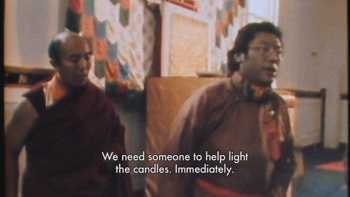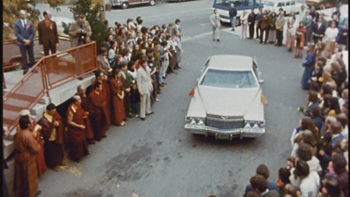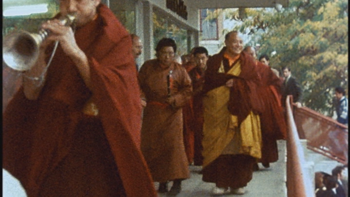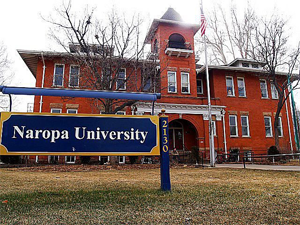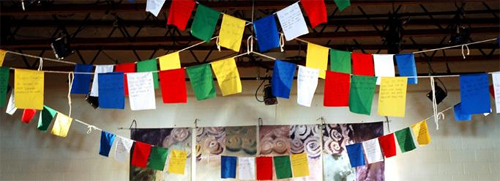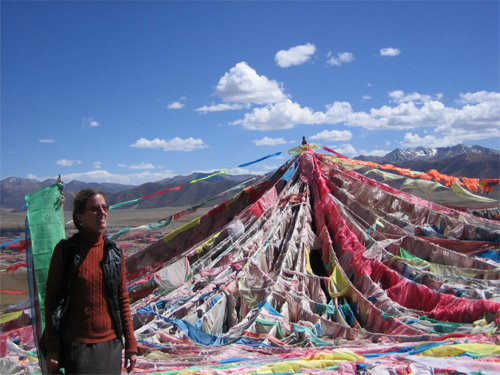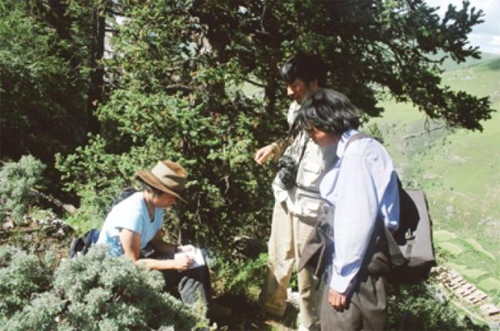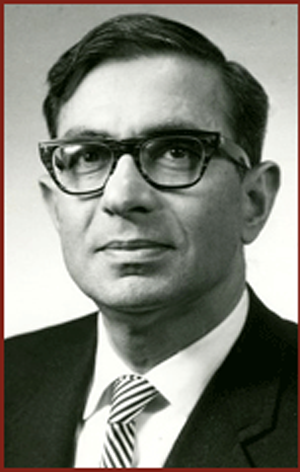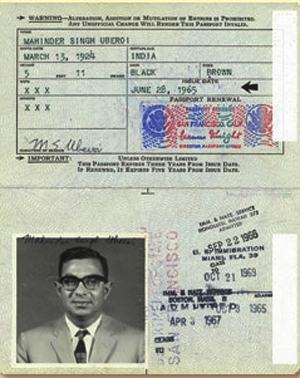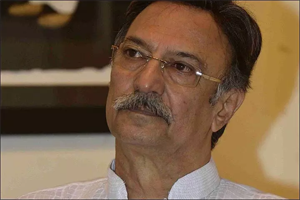by cuke.com
NOTICE: THIS WORK MAY BE PROTECTED BY COPYRIGHT
YOU ARE REQUIRED TO READ THE COPYRIGHT NOTICE AT THIS LINK BEFORE YOU READ THE FOLLOWING WORK, THAT IS AVAILABLE SOLELY FOR PRIVATE STUDY, SCHOLARSHIP OR RESEARCH PURSUANT TO 17 U.S.C. SECTION 107 AND 108. IN THE EVENT THAT THE LIBRARY DETERMINES THAT UNLAWFUL COPYING OF THIS WORK HAS OCCURRED, THE LIBRARY HAS THE RIGHT TO BLOCK THE I.P. ADDRESS AT WHICH THE UNLAWFUL COPYING APPEARED TO HAVE OCCURRED. THANK YOU FOR RESPECTING THE RIGHTS OF COPYRIGHT OWNERS.
Henry Schaeffer: I saw Rinpoche and Roshi together on four different occasions. The first time was when he gave the talk at Zen Center in May 1971, in the dining room, not the Buddha Hall. The second time was when he blessed Taggie (Tagtrug Mukpo). The third time was when we went there for lunch. Were you there, Sam?
Sam Bercholz: Mm-hmm
Henry Schaeffer: Yeah. We went there for lunch. It was Sam, myself, I think Frannie (Fran Lewis), Cason (Tania Leontov), John baker and Marvin (Casper). We went there and one of the things Rinpoche had said to us then was: "Ask Roshi what's the difference between prajna and jnana." Roshi said: "They're the same." And then one of us said: "Rinpoche says they're different." So then Roshi said: "Excuse me, I have to go up and get my Japanese Sanskrit dictionary. He went up to his room and came back down with it; then he looked at it and said, "Oh, they're different." I really felt, and I believe it to this moment, that he [Rinpoche] was also instructing Roshi. Now, is that something strange to say? I don't know. But that's what I saw.
The fourth time Roshi invited Rinpoche down with Diana. So I drove them down to Tassajara. And then Rinpoche gave a talk at the zendo one of the evenings we were there. Another thing we did down there was Roshi showed us the spot where he wanted to have his ashes, [after he was] cremated. It was further downstream from those buildings: the zendo, the kitchen, the whole thing. We took a walk over there, and Roshi showed us that he had chosen these particular rocks and boulders and stones. It had already been worked on, but it wasn't complete. That I remember very clearly. That was the fourth time I saw them together. [The site is not downstream - dc]
But the third time, he [Rinpoche] was staying with Sam's [business] partner, Michael, in Oakland.
Walter Fordham: Michael Fagan.
Henry Schaeffer: Michael Fagan yeah. And Michael Fagan had this big, maybe Victorian apartment, that was either on the second or third floor, and overlooked several backyards, and it had a back porch. So it was a nice night, and as you know, Rinpoche liked to stay up late at night, and he had a lot of us students there drinking and hanging out with him and talking. It was very late, three or four in the morning, and in the first Garuda [a sangha newsletter, which had just been published, and which Rinpoche was paging through for the first time], there's a photograph of Rinpoche from Gold Hill, wearing a kind of a grayish sport coat with a turtleneck sweater. But in that turtleneck sweater you can see his beads [malas]. They showed through [the sweater (see photo above)]. We were there and Rinpoche told us, "The time for this is over," and he took his beads and twirled them around like this, and threw them over a backyard, he just threw them away.
Walter Fordham: The malas?
Henry Schaeffer: The malas. Yeah. He just threw them across to another backyard. I can't remember which one it was, but ... We were kind of facing parallel and right and left and in front of us were backyards. And then he told me, tomorrow morning, go at ten or ten thirty and tell Roshi that he [Rinpoche] was coming at 11 with Taggie, and Roshi was going to bless Taggie. Not ask him. Tell him.
As I told you, Roshi always told me I did things wrong. I never did things the right way. I was always doing them wrong. So I told Rinpoche, "No no, oh no, he's going to really get angry with me." I already felt like maybe I had offended him because I had gone to study with the Rinpoche. A lot of people at Zen Center, Yvonne Rand, and lots of people told me I had betrayed Zen Center and Roshi by going to study with Rinpoche. You know they were telling me that there.
Rinpoche told me to get up early in the morning, and go there. So I did. Rinpoche said, "I'll be there at 11." So I went there, and I asked for Roshi, but he was up in his apartment. So then I asked for Yvonne Rand. So she came and I told her what the situation was, and she didn't like it at all, and she said, "No." I insisted, so she finally went up and talked to Roshi, and then in a few minutes he came storming down. At least that was how I saw it, and he was chewing me out, telling me, "What's this? I'm supposed to ... like giving me orders ...?" I repeated what Rinpoche said, and just then the doorbell rang and they had a desk there, with a person there, and the person went and opened those two double front doors at the Zen Center and when he opened the door, Rinpoche was there in kind of a similar shirt that we saw in the video of where Rinpoche is holding Taggie with Diana, that kind of shirt. And he's holding Taggie, and we're just seven or eight feet from the front door. I'm standing there with Roshi. And he [Roshi] wasn't that tall, but he was like a mahakala, or something. That's how I experienced it. The doorbell rings, Rinpoche is holding Taggie, and walks up to us and starts walking around in circles, holding Taggie. I'm standing kind of like this and Roshi is here, looking at me, and Rinpoche just walks around, making a few circles.
Walter Fordham: He goes around you?
Henry Schaeffer: No, just in front of us, just circles, walking around in circles. So then Roshi says, "You want me to bless Taggie?" and Rinpoche said, "Yes." And then Roshi said, "Okay." It changed then, and then Roshi said, "I have to go upstairs because I have these new Roshi robes from Japan that I've never worn before." So it was a very special thing. We went into the Buddha Hall, and Roshi had a special twig with little branches on it.
Sam Bercholz: I was there.
Henry Schaeffer: With water
Sam Bercholz: Yes.
Henry Schaeffer: And he had a little mirror, and he did this whole thing; chanted certain things in Japanese, and then he put the twig with little branches in water, and ...
Sam Bercholz: That's where Rinpoche got that ceremony.
Henry Schaeffer: ... and sprayed Taggie. And then he took the mirror, the special mirror, front of Taggie and [claps hands twice] like that. And Taggie responded
Sam Bercholz: Yeah.
Henry Schaeffer: He said, "But ..." I can't quite remember. But he saw it as a very good sign. Then we went into the dinning hall, and had some sort of refreshments.
Sam Bercholz: Mrs. Suzuki had prepared something.
Henry Schaeffer: Mrs. Suzuki was there, too, right. "Missus" in Japanese is "Okasan," that's how she was always referred to, "Okasan." [dc - Okusan]
Walter Fordham: That's great Henry. That's fantastic detail.
Sam Bercholz: His memory is unreal.
Walter Fordham: And that's a really important event because he [Rinpoche] did that ceremony.
Sam Bercholz: That's unreal. How would anyone remember that, I mean the details of it. But some people have asked where that [ceremony] comes from, and it came from right there. That was the first time, and Rinpoche really paid attention.
Henry Schaeffer: So, I'll tell him about the talk. Yeah, that was something, that was something. So there was already a set date that Rinpoche was going to come [May 27, 1971]. There was already a lot of controversy at Zen Center: Rinpoche was a charlatan, Rinpoche was just a pandita (scholar), not a yogi/practitioner. So this talk had been arranged and a lot of people came. You know, his books were out, Born in Tibet, Meditation in Action, and the first Garuda ... I drove Diana and Rinpoche, and Rinpoche had been drinking pretty good. So we walked in there, and they had the traditional ... the priest's dressing room ... a room shortly after you came into the building, and we went in there before the talk. People were all gathering and they're mostly there already, because we always got there a little late. So we're in there, and Rinpoche was sitting on a regular chair, and he had these high boots, remember the high shoes with a lot of laces? So I was kneeling on the floor.
Sam Bercholz: He had that leg brace thing.
Henry Schaeffer: Leg braces, yeah. Even after the operation, he still wore the braces. So I had to take all that off, and I was kneeling, and there was a knock on the door, and I think Diana opened the door, and it was Roshi. So Rinpoche says to Roshi, "Hi, Roshi, I'm drunk." So they talked while I was doing this, and then Rinpoche said to Roshi, "Well, Roshi, you can go now." So Roshi [says], "Okay," and he walks out and he's looking concerned. So Diana walks out with him, and closes the door, and they're standing in the hallway, and then Diana comes back in and says to Rinpoche, "Roshi thinks you're angry or upset with him."
Chogyam Trungpa: We need someone to help light the candles immediately.
Chogyam Trungpa acting very "politely" to the 16th Karmapa
-- Crazy Wisdom: The Life and Times of Chogyam Trungpa Rinpoche -- Screencap Gallery, produced and directed by Johanna Demetrakas
My beloved daughter had no chance against this wicked person, who I believe is a Nazi sympathizer as per his Facebook profile post (see video). As a result of Katsura Kan’s manipulations my daughter is dead, and he is promoting Hitler.
Amazingly, but not surprisingly, he was considered good enough to be hired by Naropa University in Boulder, CO, which is an accredited higher learning institution, where we believe he taught his students without any proper teachings credentials, the destructive dance of Butoh and its philosophy in the classroom which promoted pain, suffering, and death. We will look into what I believe is the undeserved accreditation of this university.
Thank you for watching,
Tibor Stern
On Behalf of the Sharoni Stern Estate
President of F.A.C.T., Inc.
Earlier that year, Allen had invited several poets to Boulder for a poetry reading. Gary Snyder, Robert Bly, and Nanao Sasaki were invited to read poetry with Allen Ginsberg and Rinpoche. In addition to his own poetry, Allen read some of Rinpoche's poems from a recently published book, Mudra, which included many of the early poems Rinpoche had written, in England in the sixties. The evening ended rather disastrously after Rinpoche put a large Japanese gong over his head while Robert Bly was reading a serious and significant poem. Rinpoche did a number of things to disrupt Bly's reading, actually. Gary Snyder and Robert Bly interpreted Rinpoche's behavior as rude and drunken. I guess it was, but from his point of view, their behavior was arrogant and bombastic, and he felt that humor was needed to lighten up the space. Allen took this controversy remarkably in stride, and managed to remain friends with all involved. Snyder and Bly, however, wanted nothing further to do with Rinpoche, and as far as I know, he had no regrets on his side.
-- Dragon Thunder: My Life with Chogyam Trungpa, by Diana J. Mukpo with Carolyn Rose Gimian
Sam Bercholz: Do you remember what the talk was he gave? You were going to say that. I think Dick Baker was there, right?
Henry Schaeffer: Yeah, everybody was there. It was totally jammed, people on the floor. I mean ... have you ever been to Zen Center? [DC - Dick Baker was in Japan]
Walter Fordham: No.
Henry Schaeffer: It's got a big dining room and they had, you know, they moved all the tables out.
Sam Bercholz: Yeah.
Henry Schaeffer: There were people sitting in the aisles. There were people sitting everywhere, all around. Roshi is up there, Katagiri [Roshi] is up there, and Rinpoche still keeps them waiting a bit. So finally, Rinpoche says, "Well, time to go out." He wasn't staggering at that point, but when he got out in the hallway ... I am holding on to him and he's going all over the place. We're walking down, and they had these like French doors right there and we start walking in and all these people are sitting in the aisles and everything, and [I'm] barely holding him and he's going all over the place, like you're in a ship at sea, a stormy sea. I finally get him up to his seat. Katagiri is there. Roshi is there. And then I sat on the floor, and Yvonne Rand was sitting in a seat. I was right next to her. The place is jam-packed and they're all looking at him [Rinpoche]. He barely gets on the seat. He used to be able to cross his legs and he could always ... you remember this? When he sat, his right leg could go totally parallel to the floor even though ... Do you remember that?
Walter Fordham: Yeah. Right.
Henry Schaeffer: So he would ... and he would miss....[his leg] and he was doing all this stuff.
Sam Bercholz: What a joker.
Henry Schaeffer: And Katagiri went to help him, but Rinpoche went like that [demonstrates] to him. Because I saw it, you know, and Katagiri sat right back down.
Sam Bercholz: Sensitive guy.
Henry Schaeffer: Huh?
Sam Bercholz: He [Katagiri] was a sensitive guy. He knew.
Henry Schaeffer: He knew.
Sam Bercholz: It was just a little ... it was the tiniest little gesture.
Henry Schaeffer: Yvonne Rand said to me, "You're his attendant, you ought to be helping him," and I said, "No way." So there he is. He finally gets the leg up there, and I guess Diana brought the drink in. Whatever it was, but it was alcohol, and they had a glass of water there for him. But she brought him a glass too.
Sam Bercholz: Those were Johnny Walker days, so it was obvious.
Henry Schaeffer: So he's there ... Was it the Open Way?
Sam Bercholz: Something like that. That's right. I remember it was a Mahayana talk.
Henry Schaeffer: Yeah, yeah. At first it's very hard even for us to understand him, but pretty soon ... Oh .... He took a long time, like he used to, before he even spoke, he just [exhales], you know. He felt the whole room, and got the sense of it, and everybody is there with all their thoughts and thinking. I think he must have lit a cigarette and that really ... The drink and the cigarette ...
Sam Bercholz: It was driving them insane. Not like they didn't all smoke or drink, but still ... driving them insane.
Henry Schaeffer: Finally though, he does begin to speak, and as he's talking it gets clearer and clearer, and pretty soon he's just totally right there, and the room changed. It was really something, and then in the question and answer period, it was amazing. So many people, a lot of people fell in ... a lot of Roshi's students.
Sam Bercholz: They were so magnetized, it was unbelievable.
Henry Schaeffer: Yeah, a lot of them immediately planned to leave and go to Boulder, so that was the other thing. It made a tremendous uproar at Zen Center. It was so powerful, and like Sam said the other day, it was like a stroke, a samurai stroke. But it was so gentle, it was so gentle.
He gave the talk during the sesshin and it was either a 7 or a 9-day sesshin [ dc - 7 - never was a 9], I can't recall. The talks were on Tuesdays or Wednesdays generally at Zen Center, and Saturdays. That Saturday I heard that Roshi was giving a talk, and then I went to the talk at the sesshin. I got there in the morning and sat and then about 11 he gave the talk. So he started talking and he said, "I want to talk about Bodhisattva Trungpa. He said, "When Alan Watts came here and smoked and drank [dc - that wasn't at the City Center, he just said he couldn't accept Watts' drinking], I couldn't accept it. But when Bodhisattva Trungpa came here and smoked and drank, and drank the way I'm drinking water now... (and then he took a sip), I gave up." And he went like ..., he made that gesture like, "I just gave up." Then he said, "You have no idea how much support he's giving you. He's giving you so much support. You have no idea."
So he [Roshi] saw. He understood right away.
For example, in the Shobogenzo-zuimonki Dogen Zenji tells a story, which was told to him, about an influential person, Ichijo Motoie. One day Motoie discovered that his sword was missing, and since no one else could have broken into his house, one of his own men must have stolen it. The sword was found and brought back to him, but Motoie said, “This is not my sword, so give it back to the one who owns it.” People knew that the man who had the sword was the one who had stolen it, but because Motoie didn’t accuse him of it, no one could say anything, so nothing happened. This is the calmness of mind we should have, according to Dogen.
If we have generous, big mind, and if we have a strong spirit of practice, then there is no need to worry. Dogen emphasized a sparse, simple life. Without expecting anything, we just practice our way. Many students asked how it would be possible to support the temple or group without any plan, and he said, “If it becomes difficult to support our temple, we will think about it.” So before something happens, it is not our way to think about it too much. In that way we have complete calmness of our mind. Because you have something, you worry about losing it, but if you don’t have anything, there is no need to worry.
-- Not Always So: Practicing the True Spirit of Zen, by Shunryu Suzuki
Politeness is about not hurting other’s feelings, not putting people on the spot, and not crossing them in front of others by saying things which might cause the speaker embarrassment. Instead, hold your correction until later when it’s one-on-one and the person has a chance to consider why they may be wrong.
Polite people do not blame and do not complain.
-- Politeness beyond words, by Amy Chavez

